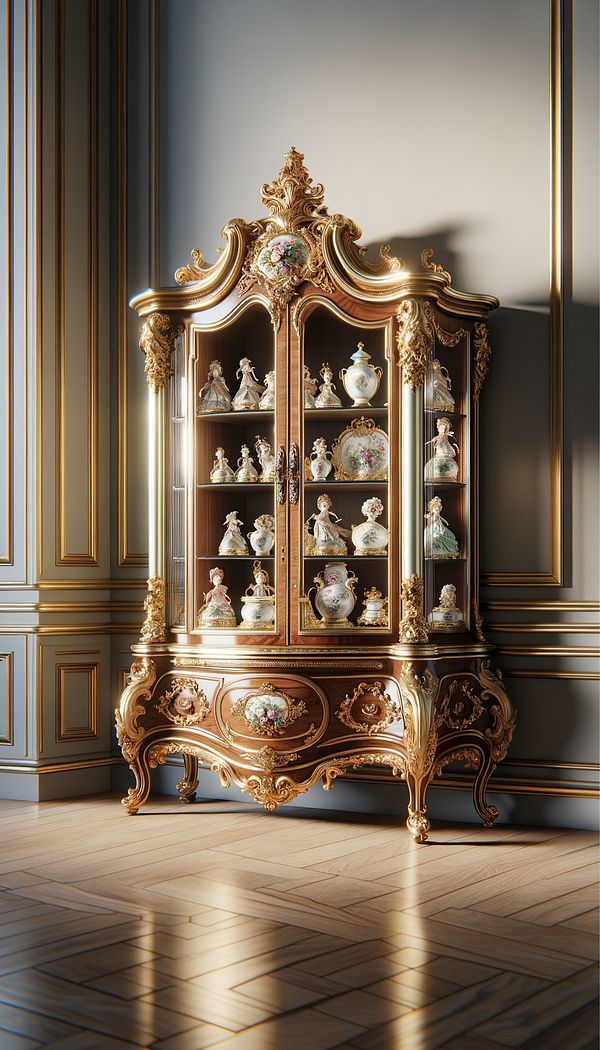What is an Encoignure?
An encoignure is a corner cabinet or piece of furniture designed to fit into a room’s corner.
Description
An encoignure is perhaps one of the most space-efficient and aesthetically pleasing solutions when it comes to utilizing corners in interior design. Originating from the French word for "corner," encoignures were highly popular during the 18th century, particularly in France, where they were regarded as a significant element of the Rococo and later Neoclassical movements. These pieces serve both a decorative and functional role, making them valuable additions to any room.
Typically, an encoignure is a triangular or polygonal piece of furniture, designed so that it can snugly fit into a corner. This enables efficient use of space that might otherwise go unused. Furthermore, thanks to their often intricate designs, encoignures can also serve as focal points, adding a touch of elegance and sophistication to a space. Whether made from wood, metal, or a combination of materials, encoignures often feature ornamental elements such as intricate carvings, marquetry, or gilded finishes, demonstrating the craftsmanship of the era they originate from or are styled after.
In modern interior design, encoignures can still be found, albeit with contemporary twists. They might be used for storage, display, or simply as a decorative piece, fitting into various design styles from traditional to modern. Moreover, encoignures can also incorporate modern functionalities such as built in lighting or mirrored interiors to further enhance their utility and visual appeal.
Usage
In a traditional living room, an encoignure might be placed in a corner to display a collection of porcelain figurines, adding a touch of historical elegance. In a more modern setting, it could be used to house multimedia devices, with its design blending seamlessly into the minimalist aesthetic of the space.
FAQs
-
What era is the encoignure most associated with?
The encoignure is most associated with the 18th century, particularly within the Rococo and Neoclassical movements in France.
-
Can encoignures be found in modern interior designs?
Yes, encoignures can still be found in modern interior designs, often with contemporary functionalities and styled to fit various decor styles from traditional to modern.
-
Are encoignures only made from wood?
No, while wood is a common material, encoignures can also be made from metal, glass, or combinations of different materials, often featuring ornamental elements.
Practical Application
When incorporating an encoignure into your interior design, consider the overall style and functionality of the space. Use it to make efficient use of corner spaces, either for storage or display purposes. Additionally, choose an encoignure that complements the room's aesthetic, whether you're aiming for a classic, ornate look or a more modern, minimalist approach.
-
Furniture Types599 articles
-
Decorative Techniques322 articles
-
Historical Periods & Movements150 articles
-
Kitchen CartA kitchen cart is a mobile workstation and storage unit designed for use in the kitchen.
-
Tudor RoseA traditional floral symbol of England, often used in architecture and design.
-
Vis-A-VisVis-à-vis in interior design refers to furniture or objects facing each other.
-
CabinetsCabinets are storage units that are typically enclosed by doors, drawers, or shelves.
-
Traverse DraperyTraverse drapery refers to a type of curtain designed to be opened and closed by pulling a cord.
